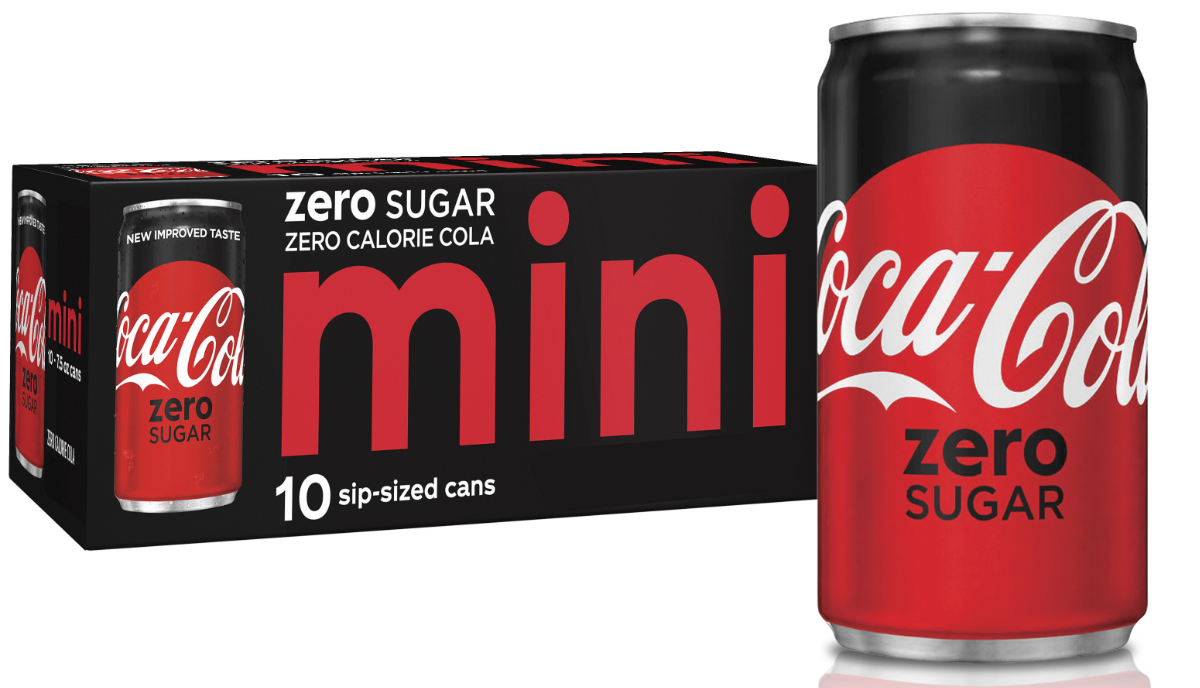ATLANTA — Millennials are drinking Coke again.
The Coca-Cola Co. is regaining relevance among the cohort, whose carbonated soft drink consumption had declined in recent years, said James Robert B. Quincey, chairman and chief executive officer. Growth in the recent quarter was driven by continued strong demand for zero sugar options and smaller packages with less sugar per serving, he added.
“It's clear that the strategy of making Coke the brand relevant with marketing, with innovation, of getting it in formats that are more on target for consumers, whether that be the Zero Sugar or the smaller packages is part of getting growth to be in the sparkling soft drinks category,” Mr. Quincey said during an Oct. 18 earnings call. “You need innovation, you need marketing, you need relevance, you need packaging, you need execution, and you need to be able to engage. And I think what you're starting to see is, yes, some reconsideration of the category by whatever age you want to take it down to — let's call it, loosely, the millennials — of the sparkling category.
“Has it flip-flopped overnight? No, it hasn't, but I think you're starting to see that if you bring relevantly marketed innovation for the right occasion to people, then they will engage.”
Net income attributable to shareowners of the Coca-Cola Co. in the third quarter ended Sept. 27 totaled $2,593 million, equal to 61c per share on the common stock, which was up 38% from $1,880 million, or 44c per share, in the prior-year period. Items impacting comparability included asset impairments, charges related to productivity and reinvestment initiatives, and transaction gains and losses. In the recent quarter, Coca-Cola recorded impairment charges related to Coca-Cola Bottlers Japan Holdings Inc. and recognized a gain on the sale of a retail and office building in New York. Adjusted net income declined 1.3% to $2,435 million from $2,466 million.
Net operating revenues rose 8% to $9,507 million from $8,775 million. Organic revenues grew 5%, driven by innovation, revenue growth management and improved execution, according to the company.
 “While consumer behavior is rapidly evolving, we continue to find new ways to connect with consumers through our leader brands,” Mr. Quincey said. “For example, we see continued strong performance in our sparkling portfolio led by trademark Coca-Cola, with 3% volume growth and 6% retail value growth, so far this year. Our brand and formula have been around for more than 130 years, and we continually work to make Coke relevant to recruit new generations of consumers.
“While consumer behavior is rapidly evolving, we continue to find new ways to connect with consumers through our leader brands,” Mr. Quincey said. “For example, we see continued strong performance in our sparkling portfolio led by trademark Coca-Cola, with 3% volume growth and 6% retail value growth, so far this year. Our brand and formula have been around for more than 130 years, and we continually work to make Coke relevant to recruit new generations of consumers.
“In addition to great marketing campaigns, consumer-centric innovation has been a key factor, especially over the last few years. This includes smaller packaging, such as mini cans, which are growing at a rate of more than 15% year-to-date in the U.S. It includes lower- and no-calorie variants that help consumers moderate their sugar intake. For example, Coke Zero Sugar is growing globally 14% volume year-to-date.
“And most recently, it's included new launches such as Coke Energy and Coke Plus Coffee, which is designed for consumers looking for a little extra upliftment. We've launched Coke Energy in more than 25 markets, and we're adjusting as we learn to how consumers are responding.”
Management updated its full-year guidance based on year-to-date performance.
“With the momentum we see in the business, we're now guiding to organic revenue growth of at least 5%,” said John Murphy, executive vice-president and chief financial officer. “This is translating into stronger underlying profit growth and an increase in our free cash flow guidance to at least $6.5 billion. Our underlying performance allows us to maintain our full year comparable e.p.s. guidance, even in the face of increasing currency headwinds compared to previous expectations.”
Shares of the Coca-Cola Co. trading on the New York Stock Exchange ticked up 1.8%, or 99c, to $54.78 on Oct. 18.




